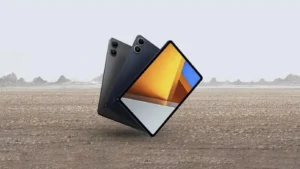The Future of Connectivity: 6G Arriving by 2030
The landscape of connectivity is evolving, and at the forefront is 6G technology. Announced at the “6G Technology and Industry Innovation Forum” during the Zhongguancun Forum on March 29, 2025, this next-generation network could make its commercial debut as early as 2030. This upcoming shift promises to redefine our digital interactions. Unlike a sudden jump, 6G will gradually emerge from 5.5G (often referred to as 5G-Advanced), ensuring a smooth transition for network providers and device manufacturers.

The “New Three” of Information Consumption
Zhang Ping, a prominent figure in the Chinese Academy of Engineering, outlined a visionary framework for 6G, emphasizing what he calls the “new three” of information consumption: intelligent connected vehicles, smart terminals, and advanced robotics. By 2030, these technologies are expected to converge seamlessly, enhancing our everyday experiences across various life scenarios—covering people, vehicles, and homes.
6G will not merely focus on faster download speeds. It will facilitate entirely new categories of devices and services that current networks struggle to support. Imagine vehicles that communicate instantaneously with each other and their environments, smart devices that anticipate our needs, and robots that operate with unparalleled precision—all integrated into our daily lives. This convergence will revolutionize our relationship with technology, creating an interconnected digital ecosystem that enhances how we live, work, and travel.
A Structured Development Roadmap
The journey toward 6G is deliberate, adhering to the telecommunications industry’s established development cycle. Key milestones include:
| Timeline | Milestone Description |
|---|---|
| July 2025 | Standardization efforts will officially begin. |
| 2028 | Industrial validation will commence. |
| 2030 | Commercial rollout is anticipated. |
6G will ensure complete backward compatibility with existing 5G networks, allowing for a seamless transition for users and operators alike. The current 5.5G deployments will serve as small-scale trials, bridging the gap between today’s technology and tomorrow’s advancements. This evolutionary strategy minimizes disruption while maximizing opportunities for innovation.
The AI-Powered Core of 6G
What distinguishes 6G is not just its speed but its intelligence. Zhang highlighted that the core innovation of 6G lies in the deep integration of intelligent communications with artificial intelligence. This integration aims to enhance real-time interactive capabilities. Imagine a network that not only transmits data but also thinks, adapts, and responds instantaneously.
This AI-driven framework positions 6G as more than a telecommunications upgrade; it is the cornerstone of digital transformation across various industries, including healthcare, transportation, and smart cities. Governments are beginning to recognize its strategic significance, as 6G is increasingly featured in official reports as a driver of societal progress.
The Future Landscape with 6G
By 2030, 6G is set to unlock possibilities that currently feel like science fiction. Intelligent connected vehicles could navigate with zero latency, drastically reducing accidents and transforming transportation. Next-generation smart terminals—ranging from advanced smartphones to wearables and even brain-computer interfaces—might anticipate our needs before we express them. Furthermore, high-end robots, powered by 6G’s low-latency and high-bandwidth capabilities, could revolutionize sectors like manufacturing, logistics, and healthcare.
Beyond individual innovations, 6G promises to merge the physical and digital realms in unprecedented ways. Real-time interactions will feel instantaneous, paving the way for innovations we can barely envision today. As Zhang Ping stated, this evolution isn’t merely about technology; it’s about fundamentally reshaping society through enhanced connectivity.
Preparing for the 6G Revolution
While 2030 may seem far off, the groundwork is being laid today. The standardization process starting in 2025 will initiate a wave of research and development, followed by real-world trials in 2028. For consumers, this gradual rollout means no abrupt obsolescence; your existing 5G devices will remain functional while we progress toward a more intelligent and interconnected future.
As we approach the 6G era, it is evident that this isn’t just another step in wireless technology. It represents a significant leap toward a new digital paradigm where intelligence, connectivity, and human experience converge. By 2030, 6G could very well become the backbone of a world that is more responsive, efficient, and interconnected than ever before. The countdown has begun—are you ready?
6G Technology Insights
6G technology is set to revolutionize connectivity by 2030, integrating AI and enhancing real-time interactions across industries.
Tags: 6G, 5G, AI, smart vehicles, robotics, digital transformation







